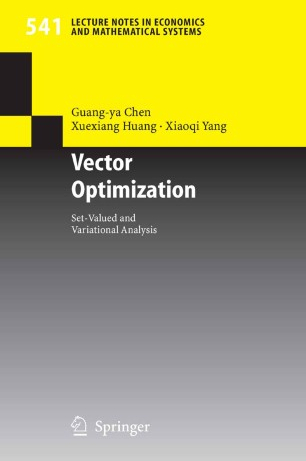
Vector Optimization
Publication year: 2005
: 978-3-540-28445-1
Vector optimization model has found many important applications in decision making problems such as those in economics theory, management science, and engineering design (since the introduction of the Pareto optimal solu tion in 1896). Typical examples of vector optimization model include maxi mization/minimization of the objective pairs (time, cost), (benefit, cost), and (mean, variance) etc. Many practical equilibrium problems can be formulated as variational in equality problems, rather than optimization problems, unless further assump tions are imposed. The vector variational inequality was introduced by Gi- nessi (1980). Extensive research on its relations with vector optimization, the existence of a solution and duality theory has been pursued. The fundamental idea of the Ekeland's variational principle is to assign an optimization problem a slightly perturbed one having a unique solution which is at the same time an approximate solution of the original problem. This principle has been an important tool for nonlinear analysis and optimization theory. Along with the development of vector optimization and set-valued optimization, the vector variational principle introduced by Nemeth (1980) has been an interesting topic in the last decade
: Business and Economics, Scalarization Method, Vector Equilibrium Problem, Vector Optimization, Vector Variational Inequality, Vector Variational Principle, Analysis, Operations Research, Optimization